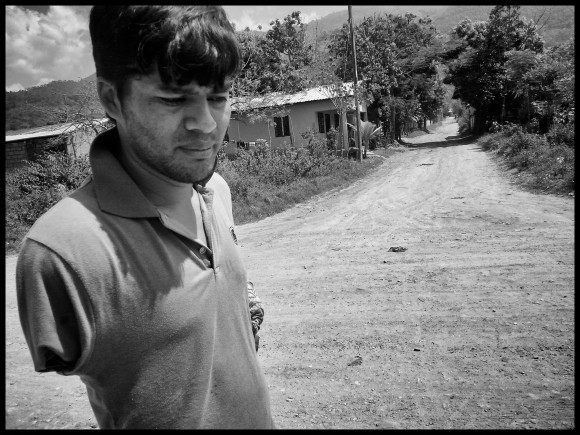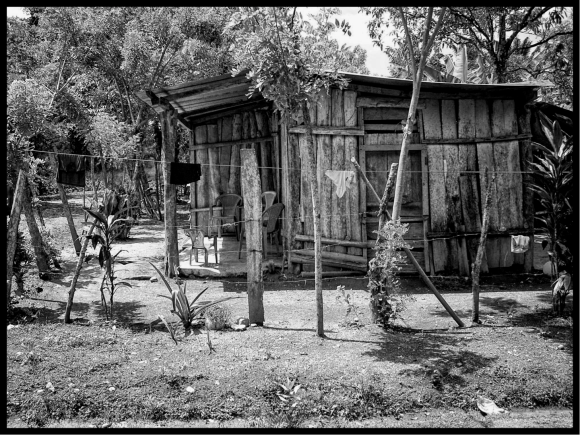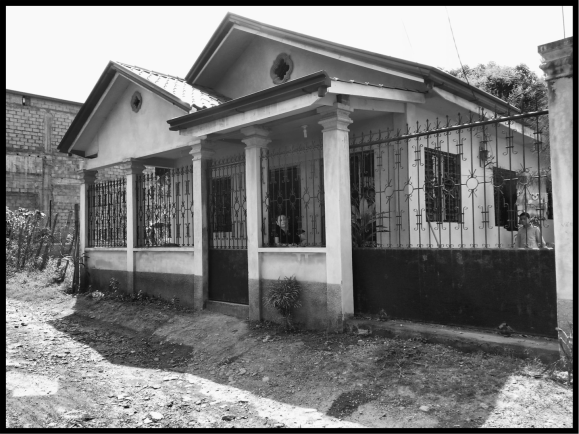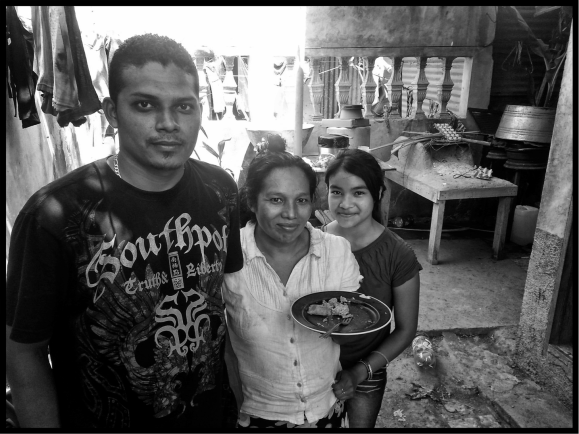News magazine Proceso first published this article on October 31, 2012.
This article is about the war in the mountains of Chihuahua, Sinaloa and Durango that has raged for years and has only become worse. Even with stories like this one by Mayorga, or this year’s knockout crónica by Marco Antonio López, “Madera, Chihuahua: A Land Living Through War,” there is great reticence in the international community to annoy Mexico’s government by declaring the country’s situation a non-international armed conflict. Mexico has managed to avoid this status even with more than 100,000 deaths since Felipe Calderón widened the drug war in 2006 and even with more deaths from violent homicide in 2017 than in 2011.
And yet the experience on the ground, as Mayorga demonstrates, is indeed one of war: of people violently pushed from their homes, of men with guns, in the government and in organized crime, and of them firing from rooftops, or ambushing civilians.
It’s an intriguing article because it suggests that peace is possible, but not because Mexico’s state guarantees it, but because a drug warlord does. That’s not a term Mayorga uses, focused as she is on the way in which the region’s residents viewed the man who guaranteed their peace as a latter day “Robin Hood.”
Mayorga’s article – now five years old and still relevant — about the war without end in the Sierra Tarahumara has been translated in anticipation of her receiving the Committee to Protect Journalists’ Press Freedom Award this November. The Mexican Journalism Translation Project will translate more work by Patricia Mayorga into English in the coming weeks so that readers who do not readily read Spanish can familiarize themselves with the work of this brave Mexican journalist.
At least 11 journalists have been murdered in Mexico in 2017. – PT

Uruachi Township, Tarahumara Mountains, Chihuahua
By Patricia Mayorga (PROCESO)
CHIHUAHUA, Chihuahua. – The assassination of Sinaloa Cartel capo Antonio Erives Arduño, 39, in Uruachi last Saturday has placed the region’s residents on high alert. The leader of this criminal group installed himself in Uruachi beginning in March 2011, styling himself as “protector” of its citizens because state, federal and local authorities are unable to respect and guarantee security.
Toño Erives, as he was known, used to help people with money, with supplies. He used to defend people who left him alone. He rescued teenagers from other gangs but he also enlisted or “tricked” others into his own.
For a year Antonio Erives managed to keep the town “peaceful” but last Saturday his rival arrived – one of the leaders of La Línea known as El Vaquero – to dispute the territory. People sought refuge in their houses while the confrontation raged between the armed groups.
Several people were killed, according to local authorities, although the precise number is not known. The confrontation lasted five hours.
In the Tarahumara Mountains it seems like there’s license to kill. The authorities and society blame the same families from those communities that have mostly sown and produced marijuana and poppies for decades, even though the violence has reached whole villages and left thousands of victims, many of whose names are never known.
Confrontations between drug traffickers have gone on forever. Residents say armed people have always been around and indigenous people and mestizos have always grown drugs. And that justification extends to giving permission to kill anybody, without knowing what he did or how many should be killed. The Chihuahuan mountains are a “no man’s land.”
The Power of Toño Erives
In the last week of March and at the beginning of April 2011, the confrontation between these criminal groups – the Sinaloa Cartel and La Línea – forced a whole village to spend night after night in the mountains. For a week they slept in low temperatures and at the mercy of the elements. This happened in Jicamórachi in Uruachi municipality.
On Monday April 9, Antonio Erives’ niece, Lidia, came down from the mountains. Her mother in law came with her, along with several aunts, and a group of children. They had all fled after some men they did not know burned down five of their properties.
Toño Erives and one of his wife’s uncles (who was assassinated in 2009 at age 19) rose to important positions in La Línea, the armed wing of the Juárez Cartel. Soon he began to stand out in this organization; however, the Sinaloa Cartel convinced him to join their ranks, marking the beginning of Sinaloa Cartel power in the region.
“He was a noble man,” Lidia says, “he gave people protection and he helped them, he lent them trucks so they could go to hospitals. He is a man with attractive features, a good person.”
El Vaquero (“The Cowboy”) arrived at Jicamórachi in March 2011. He was one of the leaders of La Línea and Erives’s former boss. The village held a dance to celebrate the coronation of their queen. A fight broke out among those assembled. Residents say that one of them took a truck laden with drugs and killed one of the men. Two days later a group of armed men, dressed like federal police, burned the villagers’ houses, including that of the town’s doctor, and also several vehicles. The rebel group entered the town shooting at nothing in particular. The people – the elderly, children, and entire families – ran to the mountains. Jicamórachi is tucked between several mountains.
A few families managed to flee and more than half of the 122 families in the village have not returned, says one of the former communal land commissioners. The villagers spent a whole weekend in the mountains. Delivery trucks refused to travel to Jicamórachi because of the risks along the way. Children became sick because the weather was chilly, forcing them to return home.
Almost all the villagers who had gone to the mountain and did not flee to other cities returned, except Lidia and her family who stayed on the mountain, hiding with her aunts and uncles. The houses burned by the armed men belonged to her family. They also burned a carpenter’s shop owned by Antonio Erives’s father. The Army arrived at the beginning of April and took over Jicamórachi’s primary school. Their presence allowed the villagers to return home.
Although she was terrified Lidia came down from the mountains. She did not say a word, only nodding in agreement that she wanted to stay with her in-laws. She had lived in the village for a brief time during her marriage but she refused to abandon it, confronting the violence on a daily basis and the demands for illegal payments that had for decades been normal in the Tarahumara Mountains.
At the time the young woman avoided anybody who asked her for details about the violence. They suggested she leave the village to return to her family but she refused. She said that she did not want to abandon her mother-in-law and her aunts.
One week later she and her in-laws left the village. The State Police offered them a helicopter so they could leave. They arrived in Sonora a few weeks later. Lidia decided to go with her family to one of the state’s large cities. She found work in a department store and that brought her some piece of mind. During a lunch break she agreed to talk about her life in Uruachi.
She accepted that she needed psychological help. She had decided to take her life back. Some weeks later she got married and now she expects to have a baby.
A Wave of Shootouts
After the gunmen took Jicamórachi from Erives in March 2011, he and his people ambushed a caravan of vehicles driven by their enemies as they moved through the township. The leader of the other group, El Vaquero, was the target. He managed to flee in an armored car, according to one of Lidia’s teenage relatives who also belongs to Erives’s group.
A few days later, and by way of revenge, the men under El Vaquero’s control seized a busload of passengers including Antonio Erives’s sister. She was a councilwoman in Uruachi. The gunmen kidnapped her and began to negotiate: control over the region in exchange for the woman.
They agreed to find a place close to Gosogachi to hand her over.
A helicopter took the councilwoman and delivered to her brother. But they had tortured her. They burned her feet. After recovering his sister, “he made war.” Both groups fought each other from different hillsides. Toño’s group won.
In that same time period another of Uruachi’s villages, Memelichi, was taken. Its villagers told people by email that nobody could leave the village. The men ran away to hide themselves, they were so afraid, but the women and children stayed behind in the village.
After “the war” Erives’s enemy arrived in the township’s main village to launch a shootout lasting five hours. Apart from Toño’s group, poorly armed police and “three or four youth” participated in the violence. The young men climbed on the rooftops so their rivals would not know where the shots came from.
By shooting from the rooftops they managed to kill several people. The residents who did manage to talk by phone confirmed that they saw how they wounded and shot several people. Each group carried the bodies away with them, making it difficult to figure out an exact number of the dead or wounded.
The women told stories about seeing teenagers invade their patios with long guns. It made them afraid. The residents confirmed that several apple pickers were forced to fight in the “war”.
The mayor, Aldo Campos Rascón, realized a day later that the town was in shock. Many houses had been shot up and car windows shattered. He confirmed that at least 10 people had been injured. The mayor asked the armed forces to stay on permanently in an attempt to constrain the violence.
“If this situation doesn’t end, the Sierra will turn into a powder keg. The people are arming themselves or they want to join those groups. Young people are mostly the ones who leave.”
“They want to join up for all sorts of reasons. People are tired of living with this fear, so they go with one side or the other. It is complicated and if we aren’t careful very shortly it’s going to explode. The people are anxious and mistrustful,” warned the mayor.
Residents in the municipality soon came to see themselves as under Toño Erives’s protection. They helped the authorities with their tasks, from protecting lives, to taking people to hospital, or supporting those who needed to be fed.
From that moment on, at the end of March and the beginning of April 2011 there were some isolated and sporadic murders. This situation changed last week when Antonio Erives’s rivals killed him. He had become Uruachi’s “Robin Hood.” Fear now centers on how both groups will adjust to each other and the decisions their leaders are going to make.
Investigative reporter Patricia Mayorga is a prize-winning Mexican journalist from Chihuahua. She works with Proceso, Mexico’s premier investigative news magazine. After the murder of her friend and colleague Miroslava Breach in March 2017 in Ciudad Chihuahua, she went into exile and is currently in hiding. The Committee to Protect Journalists will honor her with its Press Freedom Award this November.
Translator Patrick Timmons is human rights investigator and lawyer, and a journalist. He collaborates with the Freedom of Expression Project at the Trans-Border Institute at the University of San Diego. He is participating in #agendadeperiodistas, a group formed in 2017 by journalists to protect journalists. He lives in Mexico City.















